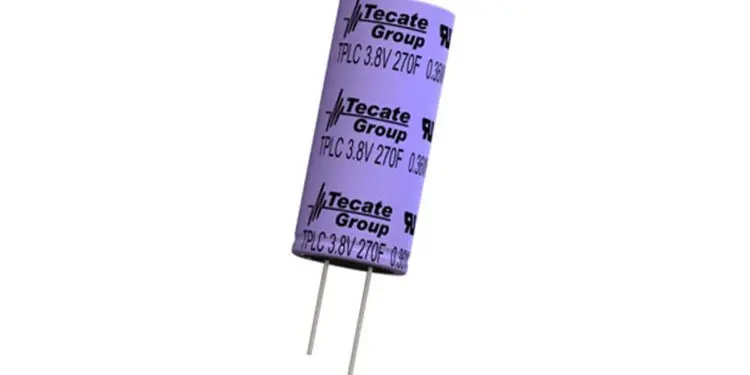Tecate Group is pleased to announce the introduction of its new family of hybrid lithium-ion capacitors (LICs), with a maximum rated voltage of 3.8V.
The TPLC™ series incorporates the key benefits of batteries (increased voltage and energy density) while maintaining the traditional characteristics of ultracapacitors (rapid charge/discharge, environmental friendliness, longevity, and safety). The TPLC™ series features a mechanically robust cylindrical footprint with a compact profile, increased maximum rated voltage of 3.8V—one and a half times higher than the 2.7V of conventional ultracapacitors—and an energy density four to ten times greater than current comparably sized ultracapacitor-based technology.
These energy-dense cells can be used as stand-alone power sources or as load-leveling devices to increase the life of an existing primary energy source. The TPLC™ cells are ideally designed for use as a storage power or short-term backup power source for consumer devices, handheld scanners, data centers, military applications, metering, measuring equipment, portable machine tools, and other applications requiring more energy at higher voltage in a compact size. The TPLC™ cells are UL-recognized and RoHS- and REACH-compliant, with operating temperatures from -15ºC to +70ºC at 3.8V and extended operating temperatures of 15ºC to +85ºC at 3.5V while still providing a 500,000 rapid charge/discharge cycle life.
Tecate Group’s TPLC™ hybrid LIC series is the most extensive product portfolio in the market, with eighteen capacitance values ranging from 10F to 450F, multiple industry-standard case sizes, and custom cell sizes available on request.






























